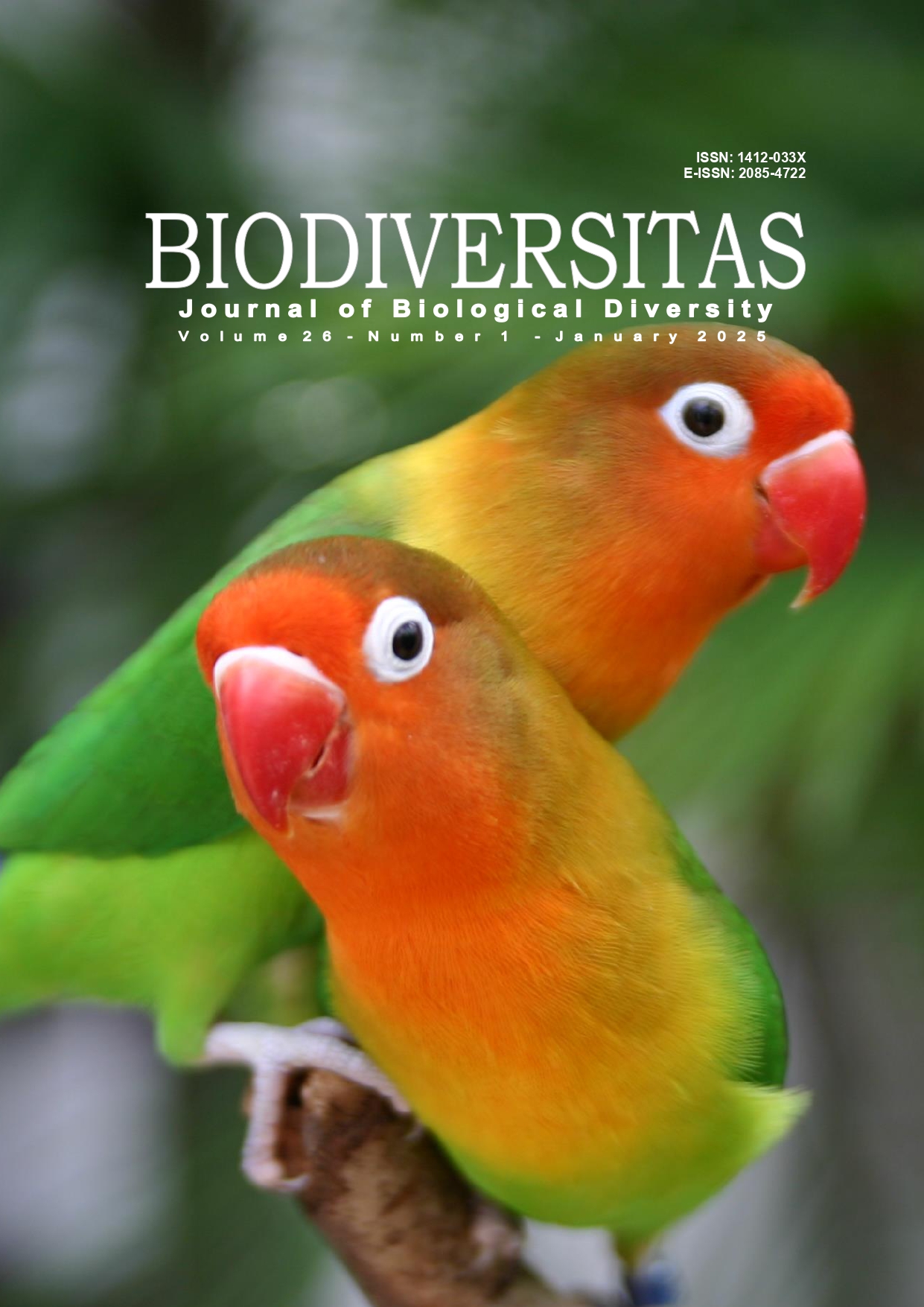Spatial and temporal distribution of macrobenthic polychaetes (Animalia: Annelida) comparing mangrove forest and aquaculture zone at Karimunjawa Island, Jepara District, Indonesia
##plugins.themes.bootstrap3.article.main##
Abstract
Abstract. Putro SP, Sihab A, Titisari RS, Anarizta LA, Hodaifa G. 2024. Spatial and temporal distribution of macrobenthic polychaetes (Animalia: Annelida) comparing mangrove forest and aquaculture zone at Karimunjawa Island, Jepara District, Indonesia. Biodiversitas 25: 178-189. Polychaetes are bioindicator of pollution in a water area due to their high abundance and sensitivity to different organic matter content in sediment. This study aimed to determine the type and structure of the community and the correlation of polychaeta community structure with environmental characteristics in the waters of the mangrove area and the aquaculture zone of BTN Karimunjawa, Central Java. Sampling was done using the Random Sampling method at three stations each in KJABB IMTA, monoculture and mangrove. Data processing using Two-way ANOVA test, k-dominance curve, Multidimensional Scaling (MDS), Principal Component Analysis (PCA), and BIO-ENV. In this study, 9 families and 16 genera of polychaeta were obtained and Spionidae family group ranked first in the abundance of organisms. The calculation of the index shows that the level of diversity and uniformity is low-medium, with no dominance in general. Based on the results of the Two-way ANOVA test showed no significant differences in the composition of polychaeta variability, spatially and temporally. The MDS ordination plot shows the grouping of organism variability between stations based on their biological composition. Further analysis using k-dominance curves showed that station 2 monoculture had the highest level of diversity and the lowest level of dominance. BIO-ENV analysis proves that environmental parameters with a strong influence on polychaeta abundance include C-organic, pH and coarse sand fraction (r: 0.418). PCA analysis showed clustering based on sediment substrate size composition (silt, coarse sand, gravel). This study indicates that polychaeta community structure between stations and periods showed no significant differences, and the relationship between biotic and abiotic parameters showed that C-organic, pH and coarse sand fraction are some of the abiotic parameters that most affect the abundance of polychaeta.

